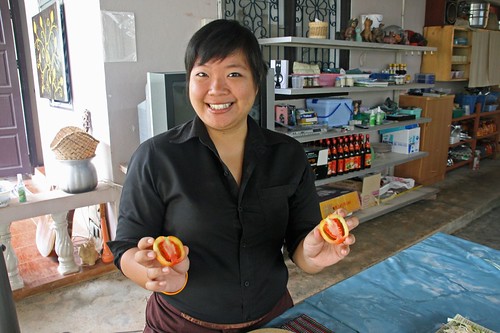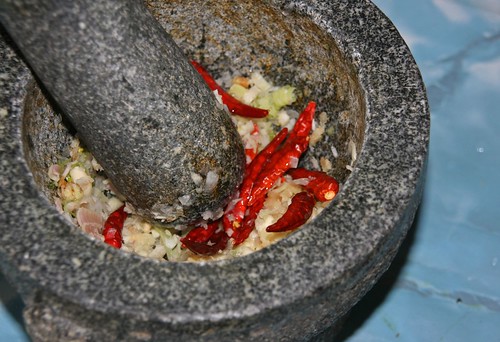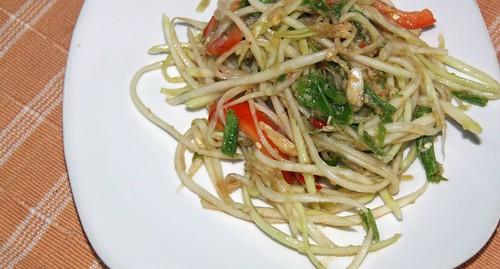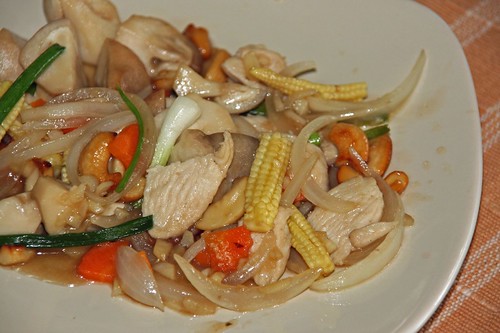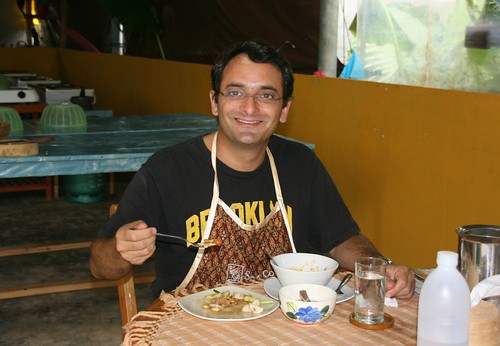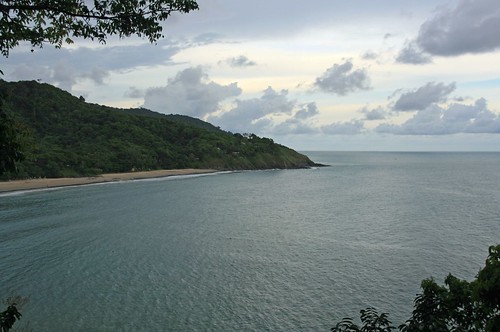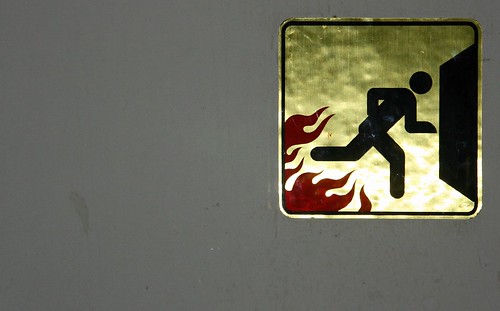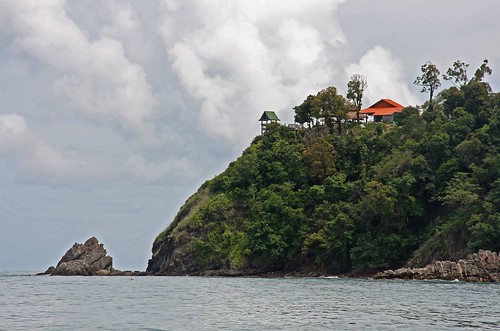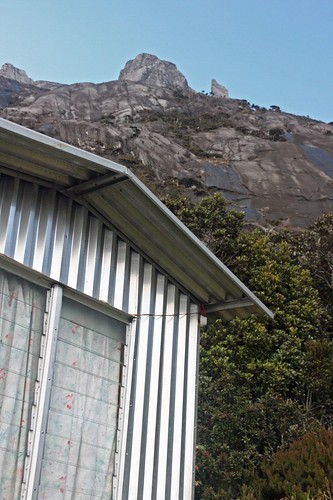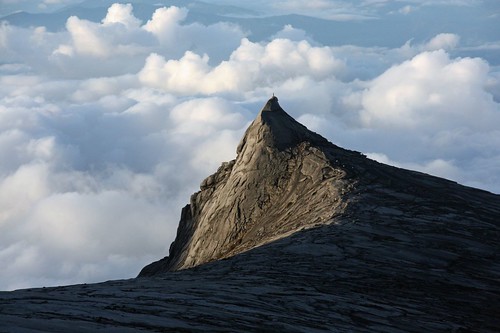Breathing in Bangkok
I'm back in the city now, and it's still sprawling and polluted. I haven't returned to Khao San Road though. I've opted instead to go upmarket for a week, booking first into Dream Bangkok, a boutique hotel with all the trimmings, and then Cozy on 10, an affordable "city residence," both located off Thanon Suhkumvit, a section of the city popular with ex-pats and filled with mid-range accommodation. It's been great to settle into a bit of luxury and leave the backpacker trail behind. This is Bangkok after all, a city with a cosmopolitan heart beating behind a chaotic facade. Who couldn't use a few nights sleeping on 300-thread-count Egyptian cotton and watching movies on a 43-inch plasma-screen television?

Official figures list the population of Bangkok at around 8 million, but the true number is probably double that. This is one crowded city, a patchwork of dense neighborhoods where poverty and wealth coexist, where modern skyscrapers cast shadows over hidden hovels. Beggars line the streets, empty cups outstretched to men and women wearing high-end fashions from European and American designers. It's a city of contrasts and contradictions, a city I haven't begun to understand and probably never will. I just walk the streets and breathe it all in, choking pollution and all.
I believe one way to get to know a place is to visit its markets. I ended up spending my first two days in Bangkok in two different shopping environments. Taken together I think they represent two sides of Bangkok (and Thailand). I first visited Chatuchak Weekend Market, the big Buddha of Bangkok's outdoor markets. I spent the next day at the super-duper upscale Siam Paragon, an ultra-modern shopping complex hawking luxury goods (jewels, furniture, clothing, even Ferraris and Lamborghinis) and visions of the future.
Outdoor market is usually a euphemism for flea market. I was pleasantly surprised to find that Chatuchak, while offering some used good, is a true market. I wandered the aisles, discovering new products around every corner: books, flowers, religious statues, furniture, pet supplies, art, fruits and vegetables, CDs, handicrafts, knickknacks and clothes, so many clothes. Young designers sold their original designs out of tiny stalls, which to me turned an ordinary marketplace into a center of creativity.
I was struck by the range of t-shirts stenciled with clever and attractive designs. I was tempted to buy one with a cat perched atop a stack of amplifiers, but they didn't have a color that I liked. I did, however, buy a set of postcards from a young artist. His expertly rendered drawings of classic Volkswagens (buses and bugs), Mini Coopers and Vespa scooters were too good to pass up. If you are reading this, you may receive one in the mail soon.
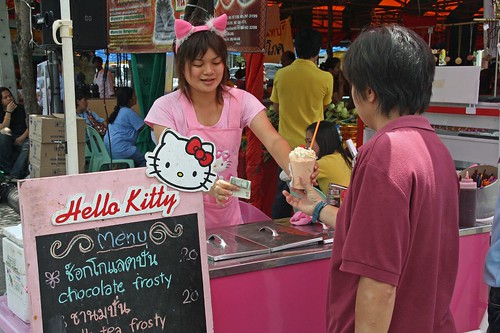




No market is complete without food. Chatuchak's food stalls are the perfect place to rejuvenate after some serious shopping. Vendors sell soups, noodles and salads from makeshift kitchens wedged into corners of the market. There are also juices, jelly drinks and coffees for sale. I sat down on a wooden bench for a frothy iced coffee and then walked and sipped a freshly-squeezed glass of tart orange and lime juice. Lunch was a a steaming bowl of thin rice noodles with nuggets of chicken and fresh veggies.
Chatuchak is a market for the people. It's down to earth, accessible and welcoming. It's a place where I saw families, couples and teenagers hanging out, shopping and having fun. I stopped and listened to amateur musicians busking for spare change and joined a dense crowd at a makeshift shop selling gold. Chatuchak has something for everyone, even a non-shopper like me.
I was surfing through cable television that night at the hotel while munching on a room service hamburger (you only live once) and came across a segment on a local program about a True Urban Park, a technology-oriented cafe at a mall called Siam Paragon. I hadn't heard about Siam Paragon, so I jumped online and did a little research. According to Wikipedia (a site I trust more every day for facts and figures about Asia), Siam Paragon opened in December 2005 and is one of the largest malls in Asia. The complex includes the obligatory shops and restuarants, but also boasts a concert hall, exhibition spaces, a gourmet market, an aquarium, a bowling alley and a multiplex with the largest multiplex screen in Asia (in the 1,200-seat Siam Pavali, which translates as "The Heaven of God in Siam").
True Urban Park reminded me of an Apple Store crossed with a Starbucks. I learned later that True is a local Internet service provider and the shop a marketing tool. Still, I felt right at home amid all that technology. There is a cafe at one end where clear-plastic lampshades hang from the ceiling and a video screen dominates one wall. The center of the store is dedicated to the latest in technology: computers, mp3 players and cameras are displayed like luxury handbags on a shelf unit. There is a nook filled with books on design and an eclectic collection of CDs. The store is anchored by a lounge with Internet-enabled computers and wide-screen monitors. Prepubescent boys perched played games featuring guns and gore; the girls preferred games in which they taught characters dance routines. And there was wi-fi (why did I leave my laptop at the hotel)?





I spent the rest of my time at Siam Paragon wandering through the mall, gawking at price tags and musing on globalization and consumer culture. I passed up the aquarium and bowling alley in favor of some quality time at Kinokuniya, one of my favorite bookstores in the world, and was tempted to pick up a new collection of short stories by one of my favorite writers, Haruki Murakami.
In my travels through Southeast Asia I've seen plenty of McDonald's, KFC and Starbucks, which didn't surprise me. I didn't expect, however, to find Bentley, Bose, Mont Blanc and Versace in Bangkok. Call me silly. Call me naive. Call it a learning experience.
What about the food? I've gone four paragraphs without mentioning anything edible. Well, it was a mall. The food court was beautiful, there were luxury restaurants to match the luxury boutiques. I ate a greasy plain plate of Japanese noodles with tempura prawns. I did, however, discover a local ice cream parlor called iBerry, where I was tempted by a scoop of Banana & Cheese ice cream in a waffle cone. I curbed the impulse and moved on.
There is a scoop of Banana & Cheese ice cream in my future. But that's another story. Stay tuned.






